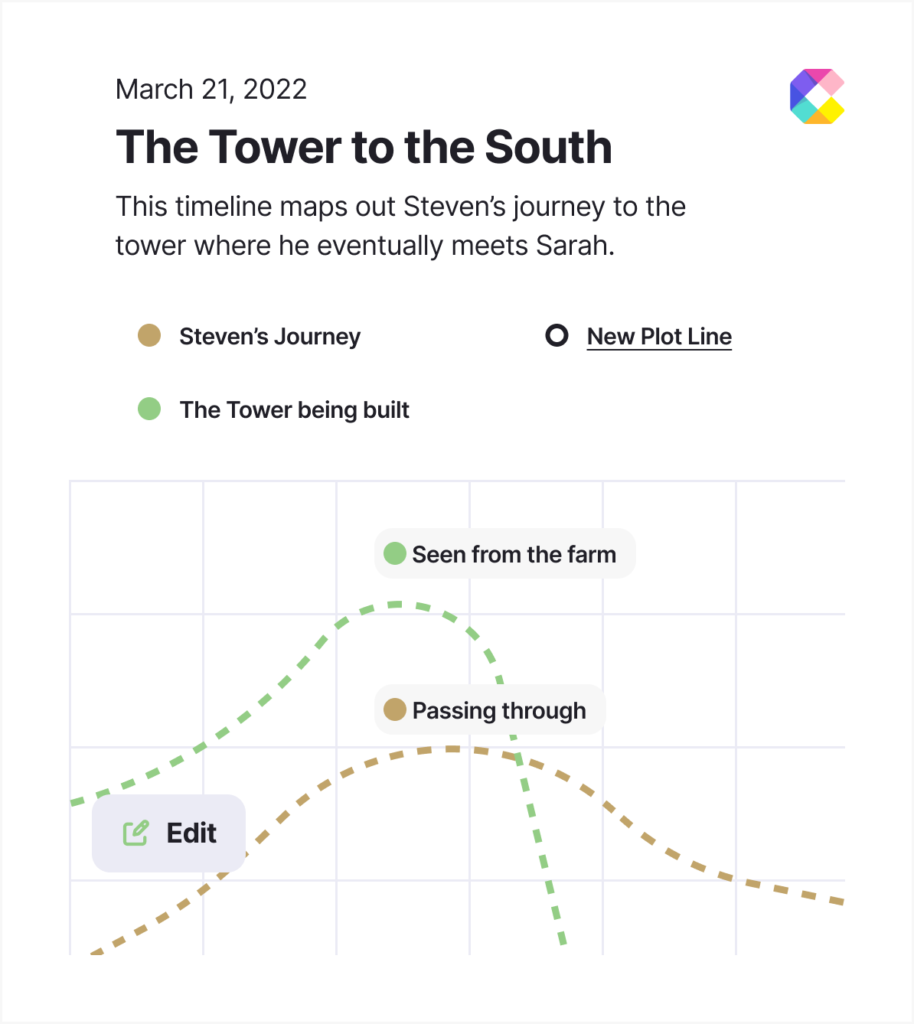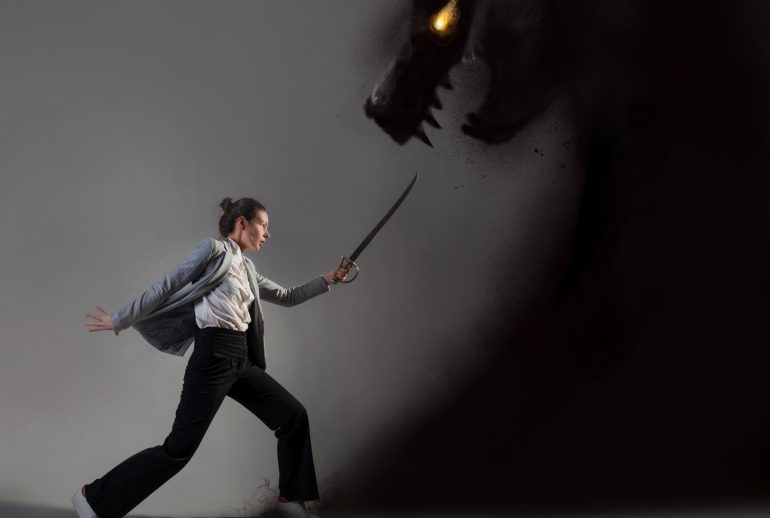Conflict is one of the most important parts of storytelling, but did you know there’s more than one kind?
External conflict.
Maybe you’ve heard of this term, maybe it’s new to you. Either way, it’s something every author needs to know to create the kind of gripping content that keeps readers coming back for more.
Conflict is the core part of any story, and without conflict, the story won’t make a good read. After all, friction, problems, obstacles, these are what make stories interesting. How your character meets challenges and either fails or overcomes makes for compelling storytelling.
Readers who need to know what happens next are looking for solid conflicts to keep them engaged. External conflicts, however, are only one of two types: internal conflicts and external conflicts.
By learning both—and utilizing both in your writing—you give your book the power to wow readers and keep them turning pages until the very end… and picking up book two, of course.
External conflicts—what does it mean and how does it affect your story?
Let me start by saying this is a complex topic that really digs into the nitty-gritty of writing. However, this is very helpful knowledge to have, and if you know your genre, knowing when to use external or internal conflict can make good writing great.
So what is external conflict?
External conflict is exactly what it sounds like—it’s a style of conflict that focuses on an outside force that conflicts with your character or their goals.
For example; in romance, if the couple is falling happily in love, but we learn the mother-in-law—pesky in-laws—is working hard to drive a wedge between the happy couple, that type of conflict is an external conflict. Anytime the character struggles against an external force, group, enemy, problem, etc, this refers to an external conflict.
Why does the type of conflict matter?
Well, again, let me refer back to romance. In a lot of romance novels, the couple needs to be united against the world. Most romance readers don’t like a couple who squabble, work against one another, sabotage each other, or otherwise create their own internal conflict through actions, emotions, and how they influence one another.
Romance readers tend to prefer an outside force trying to pull the lovebirds apart.
You need to know the different types of external conflict.
Thankfully, there are several types of external conflict and once you get these down, you’ll be able to pinpoint exactly what type of external conflict you’re using, or which you should use. Please note that these are in no particular order.
Character vs. Character
This is, quite literally, what it sounds like. When two characters (often a hero and a villain) work against one another. Cops and robbers, serial killers and detectives, love interest and in-laws, and so on.
Character vs. Society
When the character is at odds with societal institutions, notions, laws, or expectations, we encounter this type of conflict. This could look like a rebellion against family expectations, governing bodies, social norms, etc. In dystopian, there is a heavy bias toward fighting tyrannical leaders, unfair community laws, or even going against community ideas. The character will feel justified in that they’re doing the right thing, even if the right thing looks wrong.
Character vs. Nature
I’m sure you can guess what this one covers. If you guessed that the character is struggling against forces of nature, then you’re spot on! This is often seen in disaster movies that focus on some catastrophic weather event that threatens the characters.
Character vs. Technology
If your sci-fi is all about AI rising up and taking over the world, then I bet you utilize this type of conflict. However, there are a lot of examples of AI becoming some type of conflict in stories, and while this one could be coupled with person vs. person conflict, I think it deserves its own explanation.
Character vs.Supernatural
Ghost stories, werewolf stories, etc. that focus on character vs. some supernatural being, entity, or group also deserves its own spot on our list. There’s a huge dynamic and power difference when we discuss character vs. character and character vs. something potentially stronger, scarier, and much more difficult to deal with than simply another character.
What’s the next step?
Now that you know the different types of external conflicts. I challenge you to look over your writing and try to figure out what types you use! While varying up your approach can help with reader fatigue and make a story sound less repetitive, obviously you have to use the types of conflict that fit your story and genre.
It’s important to note that not every conflict must be extreme. You can have a weather event that sets characters back, challenges them, or pushes them to make a decision they might not have otherwise made without it being catastrophic in nature.
I also recommend that you make note of the different types of conflict you use in your writing. Using varied conflicts will keep your story from giving readers a sense of déjà vu. While not every type of conflict will fit every story, adding in different elements, layering conflicts, and using various levels of complexity gives your story a more in depth, realistic, true-to-life feel that will resonate with readers.
My favorite example might be Twister, where we get character vs. character, character vs. society, and character vs. nature.
If you’re not sure what I mean, think about how Bill and Jo work against one another and against the rival group trying to map tornados before their rivals can. Think about how upset they are when they learn people had no warning to evacuate and lives were lost (and they felt responsible for those deaths because they thought if they’d just been faster, they could have saved people—but because the problem hadn’t been taken seriously/solved thus far, they’re working against a society that feels tornados are just a part of life and people who live in dangerous places need to deal with the danger). And finally, the obvious one, character vs. nature… they’re running either to or from tornados for the whole movie.
Why does conflict matter, again?
Conflict builds tension. The rising action of the story tends to be built on conflict. If you think back to books you love, I’m sure you can think of different types of conflict and how they propelled the story forward while keeping you engaged.
Conflict introduces problems, issues, situations to be solved by the character. This also gives the reader an idea of how things can go wrong as well as convey stakes and danger. And anytime a character is in danger, of course they’re going to be forced to grow, adapt, overcome, and continue working toward their goal.
A story without conflict would be a painful, difficult read.
What conflicts should I use in my story?
This is a difficult question I can’t answer for you. I can, however, give you some pointers.
Vary up the types of conflict. In the sister article to this one, we’ll discuss the kinds of internal conflict. A healthy mix of internal and external conflict of different kinds, will make your work stronger and more interesting to read.
I’m a strong believer that certain external conflicts:
Character vs. character, character vs. society, and character vs. nature can be used in any story.
If you’re wondering how that would work, let me explain. Almost all books have character vs. character. A bully, a villain, a crazy ex-boyfriend turned stalker, a mother-in-law that hates the bride to be, an enemy, a ‘friend’ that wants the main character to fail, a family member who’s an alcoholic or drug addict, every story contains some level and type of character vs. character conflict. They can be mild to life-threatening, but they’re all the same form of conflict.
Character vs. society is all around us. If you look at politics—don’t worry, I’m not going to get into any deep conversation about this—everyone on all sides of every belief think they’re right… and everyone else is wrong. Certain animal rights activists pit themselves against everyone who eats meat or uses an animal byproduct. That’s a clear character vs. societal norm. Parents who believe in spanking are against parents who don’t and everyone has an opinion. However, if you think about it, most examples have some supporting belief that makes sense. Yet these are still examples of characters/people against society. If you think about this conflict in a broad term, and look around yourself in your day-to-day life, I’m sure you can find examples everywhere.
Character vs. nature. Weather happens to everyone. But weather is only one example of character vs. nature. Someone outrunning lions is against nature. Someone adrift on the ocean in a rubber life raft is against nature. Anyone who lives where earthquakes happen, or tsunamis occur, or where monsoon seasons are common… all are examples of people vs. nature. If your main character is a dragon tamer who winds up eaten by a dragon and has to cut his way out of the creature’s belly, that’s very much character vs. nature.
If you take a step back and look at the core meaning of the different conflicts, you’ll discover there are interesting angles, ideas, and ways you can use most of them in your story that fits.
Now I’m going to really blow your mind:
Even the other types can go in most stories.
Supernatural? Have your character convinced they see ghosts, but they don’t. Or perhaps they suffer from auditory hallucinations and think they hear voices or are being followed. They can believe they are dealing with something supernatural, when in reality, they’re not. (Or they are!)
AI? I can’t tell you how many times Siri has hurt my feelings. I don’t want to talk about it.
Analyze your story elements with this “at-a-glance” format. Quickly see where timelines intersect and ensure there are no gaps in your characters’ journeys or in your order of events.
- Helps to maintain focus
- Provides a method to quickly assess your storyline
- Analyze multiple story elements and characters at once




